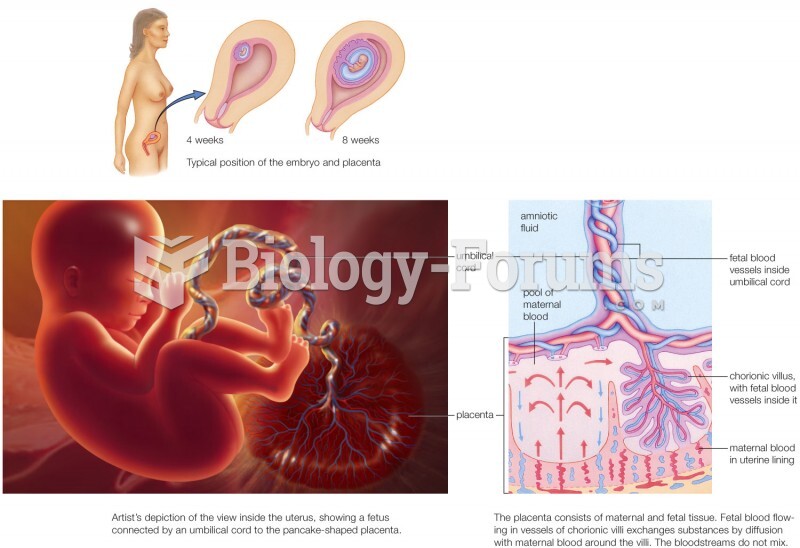|
|
|
According to the CDC, approximately 31.7% of the U.S. population has high low-density lipoprotein (LDL) or "bad cholesterol" levels.
Liver spots have nothing whatsoever to do with the liver. They are a type of freckles commonly seen in older adults who have been out in the sun without sufficient sunscreen.
Asthma cases in Americans are about 75% higher today than they were in 1980.
Acute bronchitis is an inflammation of the breathing tubes (bronchi), which causes increased mucus production and other changes. It is usually caused by bacteria or viruses, can be serious in people who have pulmonary or cardiac diseases, and can lead to pneumonia.
Signs of depression include feeling sad most of the time for 2 weeks or longer; loss of interest in things normally enjoyed; lack of energy; sleep and appetite disturbances; weight changes; feelings of hopelessness, helplessness, or worthlessness; an inability to make decisions; and thoughts of death and suicide.
 Children in Baltimore (1909) pull the stringy parts from beans in preparation for canning. Photograp
Children in Baltimore (1909) pull the stringy parts from beans in preparation for canning. Photograp
 Phyllis Schlafly drew much of her support from working-class women who were left vulnerable by the ...
Phyllis Schlafly drew much of her support from working-class women who were left vulnerable by the ...





